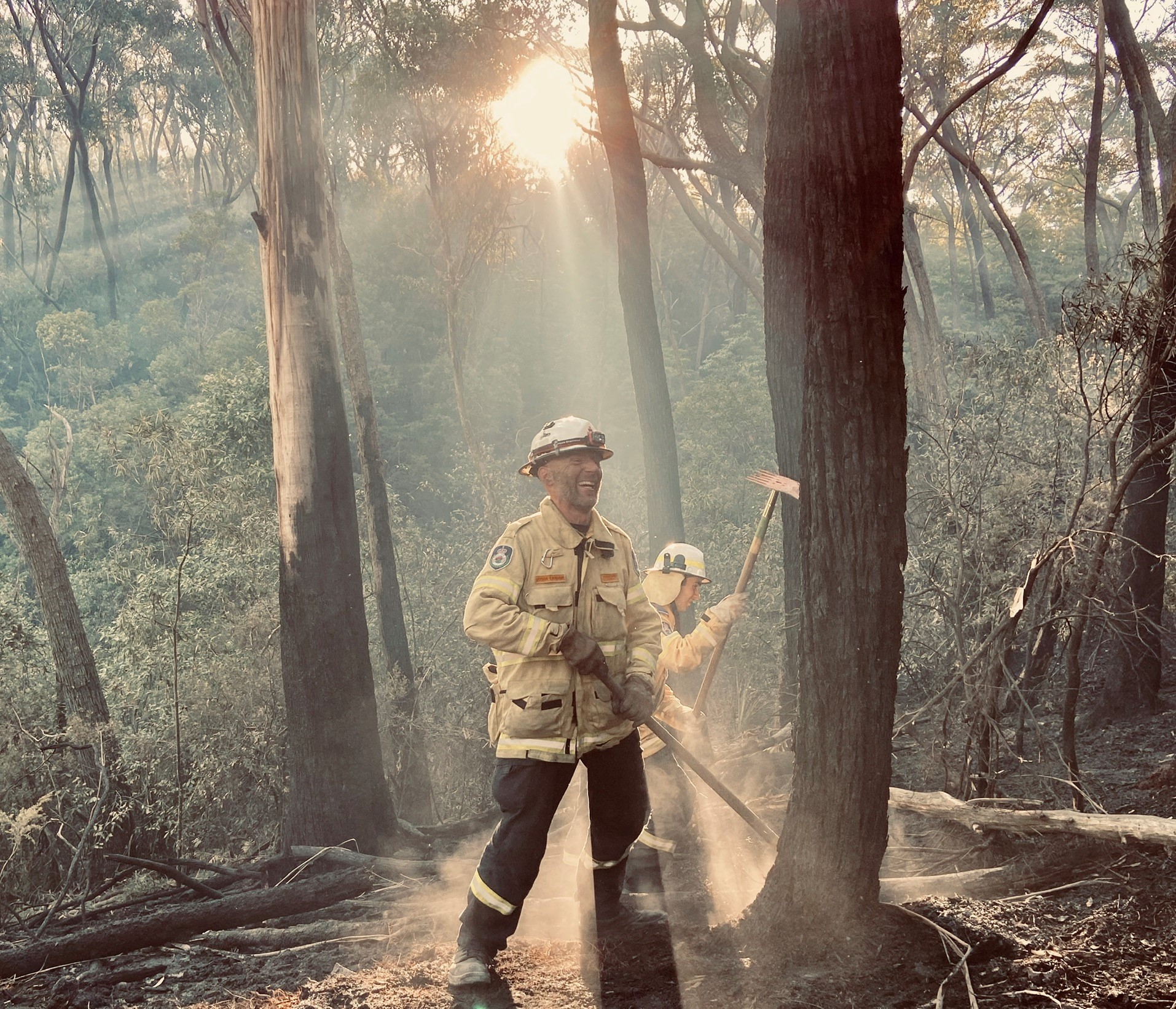With summer just around the corner and warmer weather on the way, it can be a scary reminder that fire season is upon Australian’s once again.
This year brings new insights with the Royal Commission into National Natural Disasters published last month, established after last year’s bushfires.
Black Summer fires last season destroyed 24 million hectares nationally, 3,000 homes, 33 people died, threatened species and other ecological communities harmed and nearly three billion animals killed or displaced.
Peter Bennett, member and former Captain of Katoomba Rural Fire Service Brigade, describes working for the RFS as the greatest achievement of his life.
“RFS are superheroes. Sometimes it’s hard to get the team to celebrate that they saved nine out of 10 houses because they just want to save 10 out of 10,” Mr Bennett told Hatch.
Mr Bennett was one of the witnesses for the Royal Commission into National Natural Disasters, he explains that the report will hopefully bring some much-needed support to the RFS.
“I was very proud, about four or five members in the brigade came together to write down what we going to present,” he said.
“The biggest issue for the brigade was trucks. We lost 60 trucks. We had vehicles deployed up north which didn’t return for about six months and then needed $18,000 worth of repairs.”
Mr Bennett said the brigade was behind on firetruck technology and resources before last year, which should have never been the case.
The Royal Commission presents 80 recommendations, one of those being more aerial bombers.
“While the government spending money on aircrafts is useful, aircrafts can slow down the fire but they don’t put them out, trucks and the firefighters put the fires out,” added Mr Bennett.
Other key points included, allowing the federal government to declare a state of emergency in a crisis, increase in hazard reduction burns and a consistent guide on air quality.
The report explained why fires last year were so devastating, and climate change played a major role, with a warning we should expect to see similar or even worse fire seasons in the future.
The report said: “Bushfires are expected to become more frequent and more intense. Catastrophic fire conditions may render traditional bushfire prediction models and firefighting techniques less effective.”
Greg Mullins, Climate Councillor and Former NSW Fire Commissioner spoke about the significance of climate change during the natural disaster.
“The main point made in this report is that the Black Summer bushfires would not have happened if not for the effects of climate change,” said Mr Mullins.
“We need to beef up our response arrangement. How we manage them, how we use all the state and territories and federal resources.
“But we must deal with the fundamental problem that is driving this. That is climate change,” said Mr Mullins.
Alongside the Royal Commission, an independent NSW Bushfire Inquiry looking into Black Summer was published in August.
The report also noted a number of reasons why last fire season was so severe, listing climate change as one.
“Last season showed us what damage megafires can do, and how dangerous they can be for communities and firefighters,” the authors of the report wrote.
It also warns that the fire season like the last, is likely to come again with similar ferocity, if not worse.
Mr Bennett offers advice to those who are worried about fires this year.
“The best place to go is the RFS website and download the bushfire survival plan, you can never be too prepared,” he said.
For further bushfire information go to the NSW RFS website.


